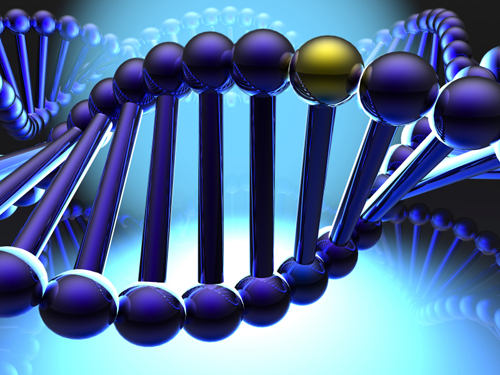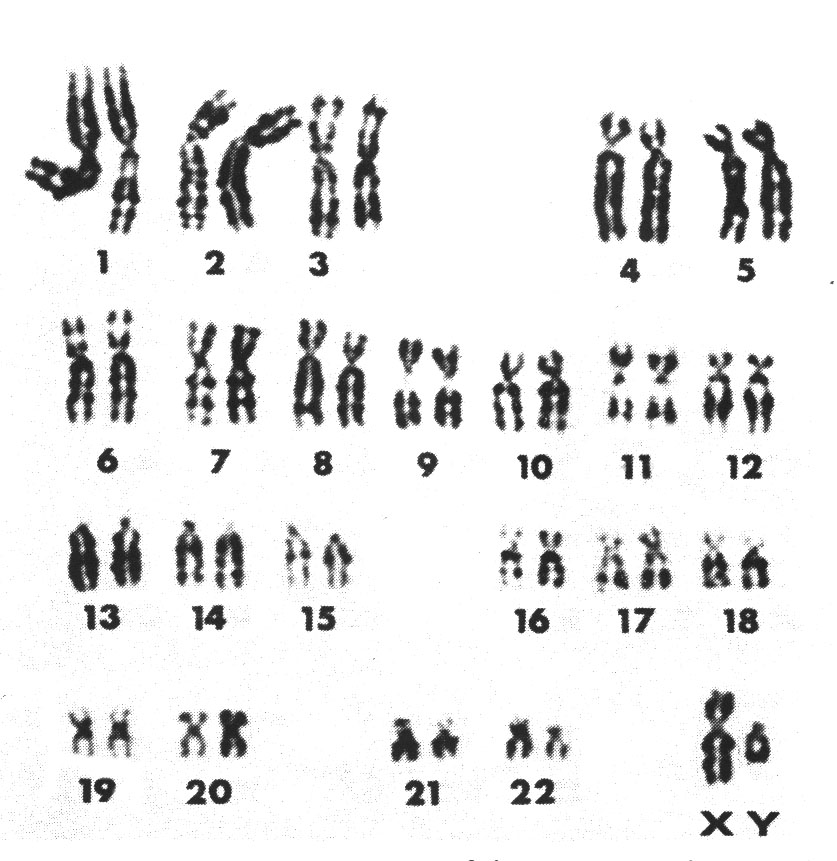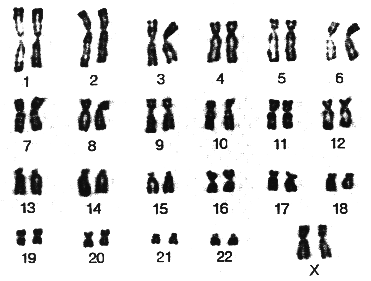
- •Lesson (1) Chromosomes and genetic information
- •Remember
- •Remember
- •Importance of crossing over:-
- •Lesson (2) The interaction of genes
- •Remember
- •Remember
- •Inheritance of blood groups in human
- •For illustration only
- •Inheritance of colour trait in mice
- •Inheritance of chlorophyll absence trait in corn plant
- •Lesson (3) Genetic inheritance and diseases
- •Importance of pedigree
- •Answer four questions only

Lesson (1) Chromosomes and genetic information

In early 20th century, scientists discovered that genetic information is carried on chromosomes , this genetic information causes the appearance of hereditary traits in living organisms.
Chromosomes exist inside cell nucleus, they are found in the form of homologous pairs in somatic and reproductive cells.
![]()
K aryotype:
The
arrangement of chromosomes of cell nucleus in descending order
according to their size and number.
aryotype:
The
arrangement of chromosomes of cell nucleus in descending order
according to their size and number.

Fig. (1) Karyotype of human male Fig. (2) Karyotype of human female
Number of chromosomes:-
Living organisms have different numbers of chromosomes, while members of the same species have the same number of chromosomes.
Somatic cells: Each somatic cell has two pairs of homologous chromosomes (one pair is inherited from father while the other from mother). They are called diploid cells (2n)
Reproductive cells (gametes) (sperms – ova – pollen grains): Each gamete has one pair of chromosomes. A gamete has half the number of chromosomes of somatic cell. Gametes are known as haploid cells (n)
In human, nucleus of each somatic cell contains 46 chromosomes (23 pairs), while that of each gamete cell contains only 23 chromosomes.
Chromosomes pairs are arranged in descending order according to their sizes from number (1) to number (23)
Chromosomes pairs from (1) to (22) are known as somatic chromosomes
Chromosomes pair (23) is called sex chromosomes because this pair carries the genetic information responsible for the determination of sex (male or female).
Sex chromosomes pair follows pair (7) in size, but its order is (23)
Karyotype in male:-
Sex chromosomes pair in male is non homologous (XY) (See fig (1))
Karyotype in female:-
Sex chromosomes pair in female is homologous (XX) (See fig (2))
(N.B: The constant number of chromosomes in all members of human kind proved that chromosomes carry genetic information responsible for the appearance of hereditary traits)
Number of chromosomes |
Species |
46 |
Human |
32 |
Chicken |
38 |
Cat |
8 |
Drosophila |
78 |
Dog |
48 |
Tobacco |
48 |
Gorilla |
16 |
Onion |
48 |
Potato |
14 |
Peas |
26 |
Frog |
48 |
Wheat |

Scientists Boveri and Sutton put chromosome theory in 1902, which states that:-
- Chromosomes exist in somatic cells in the form of homologous pairs (2n)1
2- Gametes contain half the no. of chromosomes in somatic cells as a result of meiotic cell division; where homologous pairs get separated from each other forming two identical groups
3- Each pair of chromosomes acts independently when being transferred to gametes.
4- After fertilization process, the normal number of chromosomes (2n) comes back
5- Each chromosome carries hundreds of genes.
A chromosome is made of DNA and protein, DNA carries genes which have the genetic information of living organisms
A gene consists of a series of nucleotides, it forms protein codes which are responsible for the appearance of traits in living organisms.
